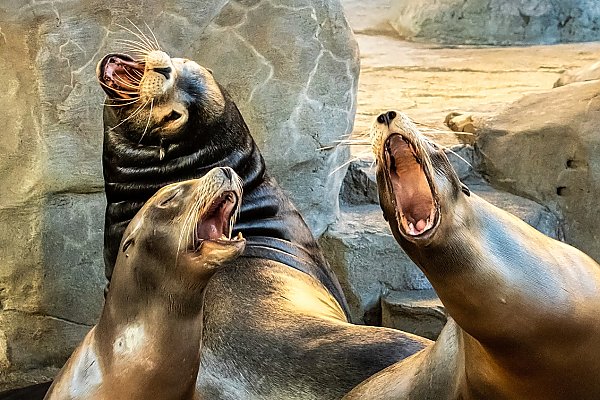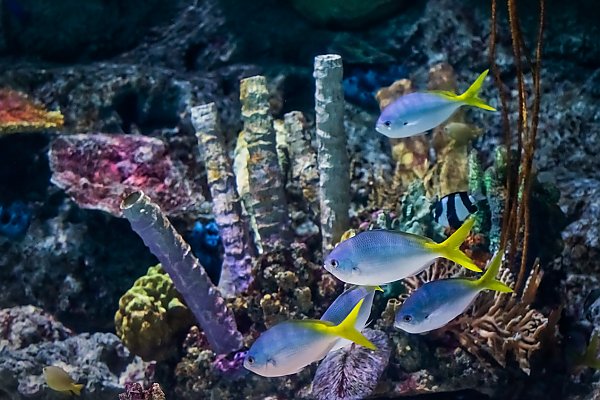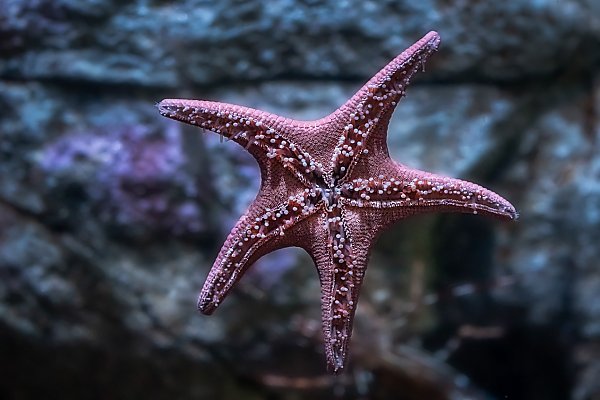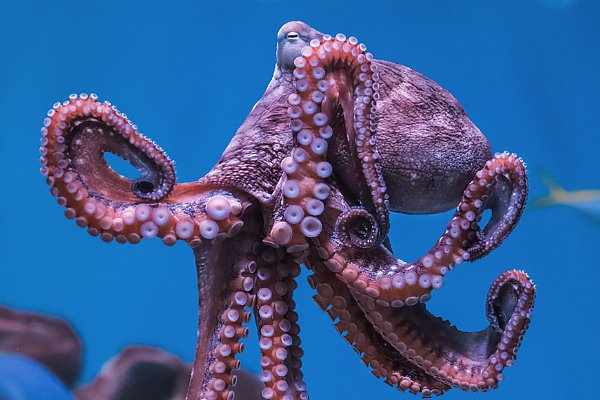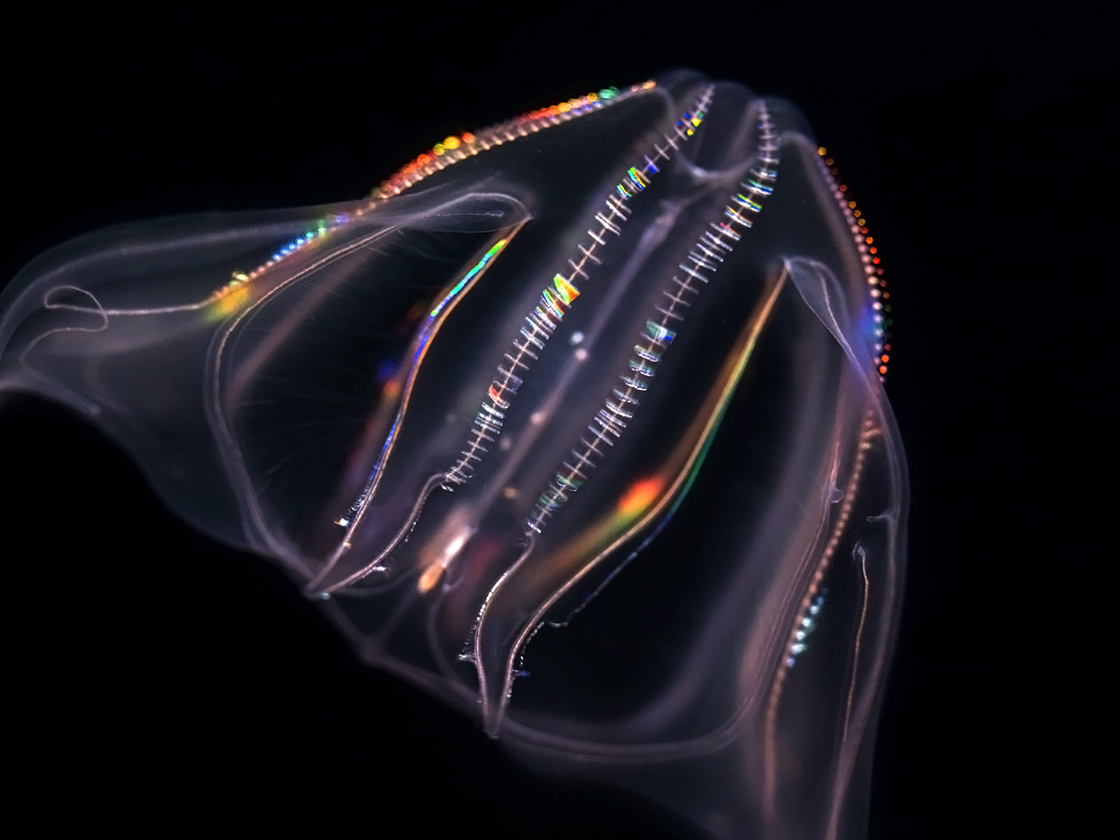Marine Life Endangerment and Extinction
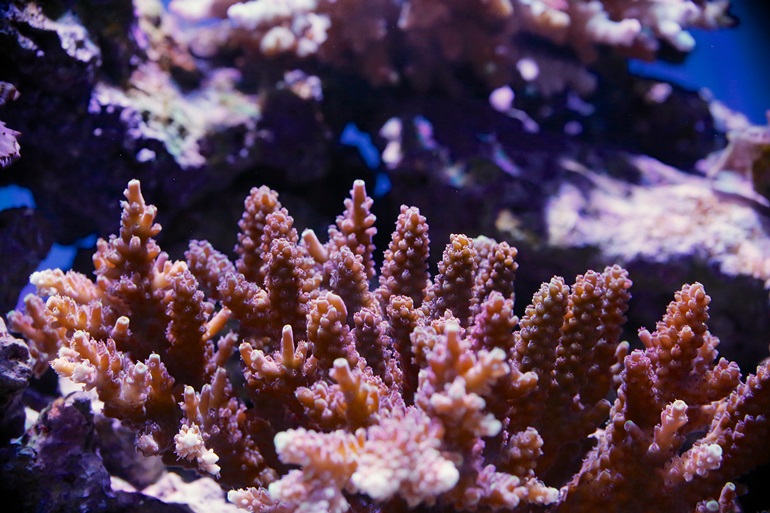
Coral reefs are among the habitats most vulnerable to climate change, and as the most diverse ocean habitats, the most vulnerable to species loss. Credit: Anitza Valles
September 3, 2015
It is part of the Aquarium’s mission to inspire people to become ocean stewards by making choices in their day-to-day lives that help protect the ocean and its inhabitants. Today human activity is threatening ocean health, shrinking ocean habitats and decreasing animal populations. However, human activity has caused more extinctions of land-based species and fewer in the ocean. By acting quickly we may be able to halt this trend and avoid ocean extinctions of the scale we’ve already seen on land.
We are in the middle of the Earth’s sixth mass extinction, and this event is a direct result of human activity. Because humans are land animals, we’ve historically had a much bigger impact on land than ocean habitats. In the last two centuries pollution, overfishing, and climate change have been shrinking ocean habitats and pushing many ocean species to the edge of extinction.
Coral reefs are among the habitats most vulnerable to climate change, and as the most diverse ocean habitats, the loss of reefs brings with it a huge risk of species loss. To protect the reefs, we need to build a renewable energy future.
The vaquita, native to the Sea of Cortez, is the world’s smallest species of porpoise. In the last fifty years, reckless fishing practices have shrunk their population such that fewer than 100 vaquitas are alive today. The vaquita is the coal mine canary of our ocean future. Hundreds, perhaps thousands, of ocean species face a very similar fate in coming decades unless we change our habits now.
While the stories of some marine species are grim, there are examples of species that have recovered thanks to a change in human behavior. Seal and sea lion populations in California plummeted in the past due to habitat loss, pollution, and overfishing, yet have rebounded in the last few decades as we have become better managers of our living coastal resources. The vaquita needs the same kind of approach to save it. If we can stop illegal gillnet fishing in the Gulf of California, the vaquita will survive and recover.
The California sea otter is one of the earliest examples of a conservation effort succeeding. Like the vaquita, otters once numbered fewer than 100 in California, but have over recent years reached much higher numbers due to management efforts and protections both of them and their habitats.
You can learn more about threatened and endangered marine life species throughout the Aquarium. Look for threatened species in exhibits marked with the fish skeleton logo, such as our sawfish in Shark Lagoon and sea turtles in the Tropical Reef exhibit. To learn the vaquita story in more detail, visit the Aquarium’s vaquita display in the Southern California/Baja Gallery on the second floor. To learn about a species recovery program, check out our Guam Kingfisher exhibit outdoors between Lorikeet Forest and Shark Lagoon.
We can halt the accelerating rate of extinctions, before it is too late. If we take action now to make our way of life sustainable, the loss of Earth’s irreplaceable biodiversity need not happen. We can tackle climate change by adopting clean energy practices and reducing waste, we can combat habitat destruction through informed planning of how we use ocean spaces, and we can reduce unsustainable fishing by eating more seafood from environmentally responsible sources, such as sustainable aquaculture.



